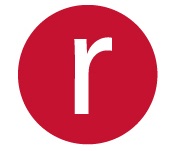If you have not had a chance to read the first part in this blog series on Media literacy, you can access it here: http://wp.me/pT6KW-3f.
So why is critical media literacy important to student learning? The current discourse and research shows that this skill is now, more than ever, crucial to our students’ engagement and learning. The teaching of critical media literacy skills is fundamental to students’ personal, social, and academic development. Rapid advancements in digital and computer technologies, the continuous influx and accessibility of media, and the changes in how we acquire and use information, demand that we prepare students to be informed citizens actively participating in social discourse. Students need to be prepared for a future in which they are engaged as critical thinkers in a democratic citizenship; in this role, they must be willing and able to question, assess, evaluate and respond to the representations and perspectives of the projected realities that they are continuously bombarded by.
We are living and teaching in an age that requires students to become literate in numerous areas. We can no longer merely educate with a focus on print literacy. As cultural theorist Douglas Kellner points out in his essay, Multiple Literacies and Critical Pedagogy in a Multicultural Society, “in addition to print literacies, we need to develop in students critical media literacy, computer literacy, and multimedia literacy…cultural literacy, social literacy and eco-literacy” if we are to prepare them for the challenges of the new technologies, the wealth of media materials, and the need to understand the multi-cultural society in which they live.
Kellner’s notion of teaching ‘multiple literacies’ is particularly important in English classrooms. In the current curriculum, there is no other area of study that incorporates multiple literacies to the extent that English does; in the study of language, literature and culture, it is impossible for teachers not to incorporate technological and computer, social and cultural, multi-media, print, and critical media literacies.
